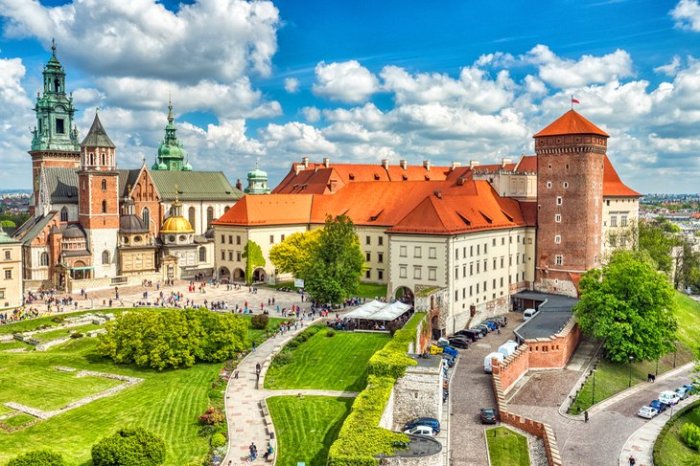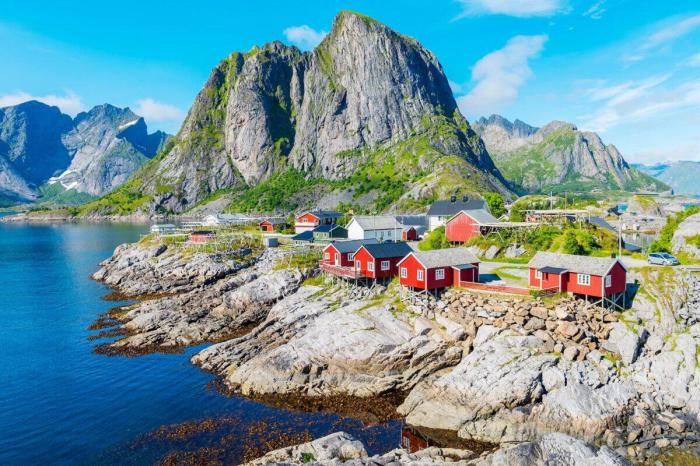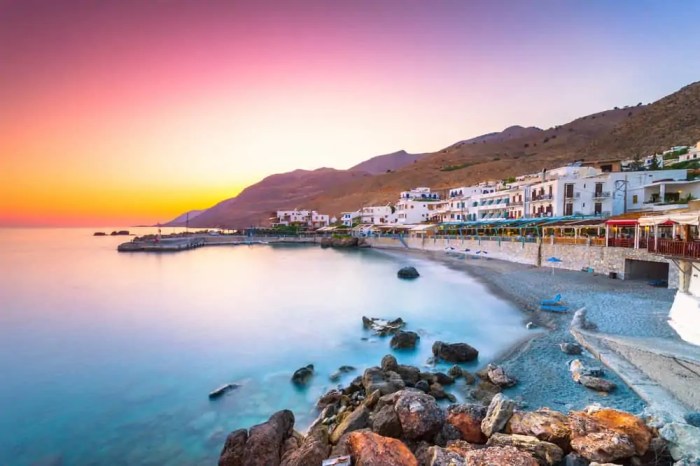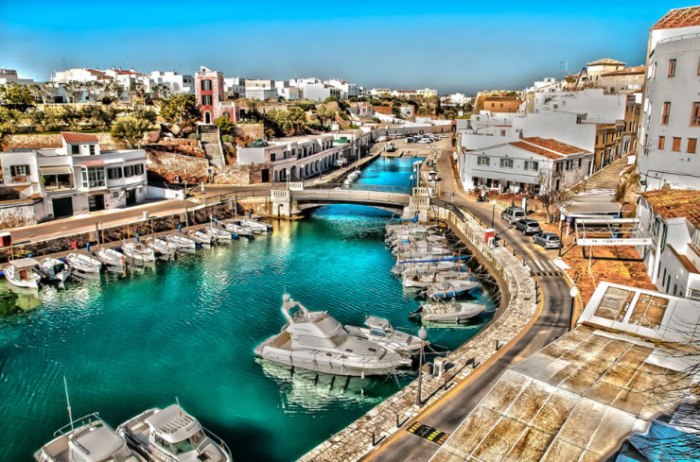Top 25 Medieval Places To Visit In Europe
Top 25 Medieval Places To Visit In Europe – Step back in time and explore the captivating remnants of a bygone era. From towering castles to ancient cathedrals, Europe is brimming with medieval treasures that whisper tales of knights, kings, and the rise of civilization.
Whether you’re a history buff, an architecture enthusiast, or simply looking for a unique travel experience, these destinations offer a glimpse into a world of chivalry, faith, and the foundations of our modern world.
This comprehensive guide delves into the heart of medieval Europe, highlighting the most fascinating sites that showcase the period’s architectural marvels, religious influence, urban development, and cultural legacy. From iconic castles like Neuschwanstein in Germany to the awe-inspiring Hagia Sophia in Istanbul, we’ll journey through centuries of history, uncovering the stories behind each destination and providing insights into the lives of those who walked these lands long ago.
Introduction
The Middle Ages, spanning from the 5th to the 15th centuries, was a transformative period in European history. This era witnessed the rise and fall of empires, the development of new technologies, and the flourishing of art, literature, and architecture.
Medieval Europe was a melting pot of diverse cultures, beliefs, and societal structures, leaving behind a legacy of architectural marvels, historical sites, and cultural traditions that continue to captivate and inspire us today.Exploring medieval sites provides a unique opportunity to connect with the past and gain a deeper understanding of the lives, beliefs, and challenges faced by people centuries ago.
From towering castles and imposing cathedrals to quaint villages and bustling marketplaces, these remnants of the Middle Ages offer a glimpse into the social, political, and religious landscape of a bygone era.
Selection Criteria for the Top 25 Medieval Places
The selection of the top 25 medieval places in Europe was based on a combination of historical significance, architectural grandeur, cultural influence, and preservation efforts. The list encompasses a diverse range of sites, from well-known landmarks to hidden gems, representing the rich tapestry of medieval European history and culture.
Castles and Fortifications
Medieval castles were not just grand residences for royalty; they were strategically designed fortresses that played a vital role in the political and military landscape of Europe. They were symbols of power, providing defense against invaders and asserting dominance over the surrounding lands.
Castle Architecture and Features
The architectural style of medieval castles evolved over centuries, reflecting advancements in construction techniques and military strategies. The most common type was the motte-and-bailey castle, which consisted of a mound of earth (motte) topped with a wooden or stone tower, surrounded by a courtyard (bailey).
As construction techniques progressed, stone became the primary building material, leading to the development of more robust and imposing castles. Key features included:* Walls:Thick, fortified walls with towers and battlements provided defense against attackers.
Gates
Heavily fortified gates with drawbridges and portcullises controlled access to the castle.
Europe is packed with medieval gems, so it’s tough to narrow it down to just 25. But if you’re looking for a hidden gem, you should definitely check out Montenegro. Montenegro is known for its stunning natural beauty, but it also has a rich history and culture, making it a great place to add to your medieval travel list.
You can check out Top 10 Places To Visit in Montenegro to see what you might want to see. Once you’ve explored Montenegro, you’ll be ready to tackle the rest of the medieval wonders of Europe!
Towers
Towers, often strategically placed along the walls, provided observation points and vantage points for archers.
Donjon
The central tower, also known as the keep, served as the lord’s residence and a last line of defense.
Courtyard
The courtyard was the central area of the castle, used for various activities, including training, storage, and accommodation for the lord’s retinue.
Moat
A ditch filled with water or other obstacles surrounded the castle to deter attackers.
Top 10 Castles in Europe
Medieval castles scattered throughout Europe stand as testaments to the architectural ingenuity and strategic prowess of the past. Here are ten of the most notable:
| Name | Location | Historical Period | Key Features |
|---|---|---|---|
| Château de Chambord | Loire Valley, France | 16th Century | Imposing Renaissance-style castle with a distinctive double-helix staircase, numerous towers, and a grand courtyard. |
| Neuschwanstein Castle | Bavaria, Germany | 19th Century | Romantic-style castle built by King Ludwig II, known for its fairytale-like appearance, intricate towers, and stunning views. |
| Edinburgh Castle | Edinburgh, Scotland | 12th Century | Hilltop fortress with a long and rich history, featuring a powerful castle complex with a historic chapel, a national war museum, and a panoramic view of the city. |
| Conwy Castle | Conwy, Wales | 13th Century | Well-preserved medieval castle with imposing walls, eight towers, and a commanding position overlooking the town. |
| Château de Carcassonne | Carcassonne, France | 13th Century | Fortified city with a double wall system, numerous towers, and a rich history dating back to the Roman period. |
| Hradčany Castle | Prague, Czech Republic | 9th Century | Historic castle complex that has served as the seat of power for Czech monarchs for centuries, featuring St. Vitus Cathedral, Golden Lane, and a breathtaking view of the city. |
| Windsor Castle | Windsor, England | 11th Century | Royal residence of the British monarchy, featuring a magnificent state apartments, St. George’s Chapel, and a picturesque setting on the banks of the River Thames. |
| Krakow Castle | Krakow, Poland | 14th Century | Historic castle complex with a royal palace, Wawel Cathedral, and a museum showcasing the history of Polish kings and queens. |
| Prague Castle | Prague, Czech Republic | 9th Century | Largest ancient castle complex in the world, with a rich history and a stunning architectural ensemble that includes St. Vitus Cathedral, Golden Lane, and the Old Royal Palace. |
| Château de Pierrefonds | Oise, France | 14th Century | Impressive medieval castle restored in the 19th century, featuring a grand keep, fortified walls, and a picturesque setting in a forest. |
Religious Sites
Religion was a cornerstone of medieval European life, shaping everything from daily routines to political structures. The construction of grand cathedrals and monasteries was a testament to the devotion and power of the Church, and these magnificent structures remain as powerful symbols of faith and architectural brilliance today.
Top Cathedrals and Monasteries, Top 25 Medieval Places To Visit In Europe
These five cathedrals and monasteries stand out for their architectural beauty, historical significance, and enduring spiritual presence.
- Chartres Cathedral, France. A masterpiece of Gothic architecture, Chartres Cathedral is renowned for its soaring twin spires, intricate stained glass windows, and the stunning Royal Portal. Built in the 12th and 13th centuries, it was dedicated to the Virgin Mary and became a pilgrimage site for believers seeking her intercession.
- Notre-Dame Cathedral, France. Located in the heart of Paris, Notre-Dame is a quintessential example of French Gothic architecture. Its iconic twin towers, rose windows, and intricate sculptures have captivated visitors for centuries. The cathedral has undergone significant restoration after a devastating fire in 2019.
- St. Peter’s Basilica, Vatican City. As the largest church in the world, St. Peter’s Basilica is a masterpiece of Renaissance architecture. It houses some of the most important works of art in the world, including Michelangelo’s Pietà and Bernini’s Baldachin. The basilica is the center of the Catholic Church and a destination for pilgrims from around the globe.
- Hagia Sophia, Istanbul, Turkey. Originally built as a Christian basilica in the 6th century, Hagia Sophia served as the seat of the Eastern Orthodox Church for nearly a thousand years. After the Ottoman conquest of Constantinople in 1453, it was converted into a mosque.
In 1935, it was secularized and became a museum. In 2020, it was reconverted into a mosque. Its massive dome, intricate mosaics, and historical significance make it one of the most important religious structures in the world.
- The Monastery of Montserrat, Spain. Nestled in the rugged mountains of Catalonia, the Benedictine monastery of Montserrat is a spiritual retreat and a popular pilgrimage site. The monastery is renowned for its stunning location, its iconic black Madonna statue, and its breathtaking views of the surrounding mountains.
| Name | Location | Religious Order | Notable Features |
|---|---|---|---|
| Chartres Cathedral | Chartres, France | Catholic Church | Twin spires, stained glass windows, Royal Portal |
| Notre-Dame Cathedral | Paris, France | Catholic Church | Twin towers, rose windows, sculptures |
| St. Peter’s Basilica | Vatican City | Catholic Church | Michelangelo’s Pietà, Bernini’s Baldachin |
| Hagia Sophia | Istanbul, Turkey | Originally Eastern Orthodox Church, now a mosque | Massive dome, intricate mosaics |
| Monastery of Montserrat | Montserrat, Spain | Benedictine Order | Black Madonna statue, stunning mountain location |
Cities and Towns
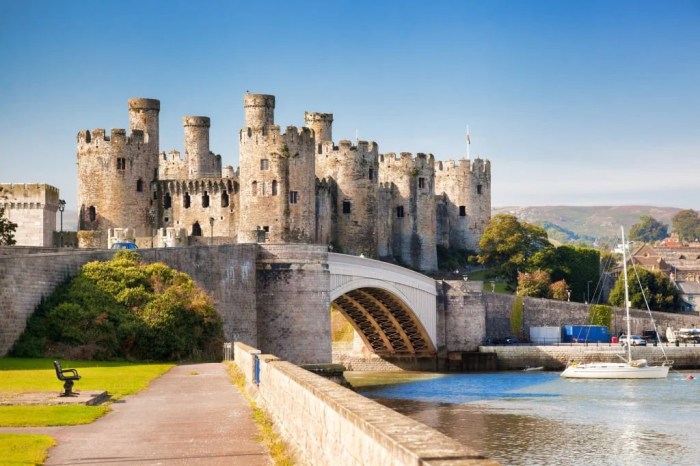
Medieval Europe was a period of significant urban development, with cities and towns playing a crucial role in economic, social, and political life. These centers of trade, craftsmanship, and culture attracted people from surrounding areas, leading to population growth and the emergence of bustling urban environments.
If you’re planning a European adventure, you gotta check out the Top 25 Medieval Places To Visit In Europe. There are castles, cathedrals, and ancient towns galore, and some of the most fascinating sites are right in the Netherlands! If you’re looking for some Dutch history and culture, you should definitely check out the Top 10 Places To Visit in The Netherlands for some inspiration.
You’ll be amazed by the country’s rich medieval past, and you might even find a new favorite spot to add to your Top 25 list!
Medieval Cities and Towns
Medieval cities and towns developed distinct characteristics that set them apart from earlier settlements. These characteristics included:
- Fortifications:Medieval cities were often surrounded by walls, moats, and other defensive structures to protect them from attacks. These fortifications were not only meant to keep out invaders, but also to control access to the city and to maintain order within its boundaries.
- Centralized Markets:A key feature of medieval cities was the presence of a central market square, where merchants and artisans would gather to sell their goods. These markets were often located in the heart of the city, near the main thoroughfare.
- Guilds:Medieval cities were also characterized by the presence of guilds, which were associations of craftsmen and merchants. Guilds regulated the production and sale of goods, and they also provided social and economic support to their members.
- Cathedrals and Churches:Medieval cities were often dominated by large and imposing cathedrals and churches. These buildings were not only places of worship, but they were also important centers of community life and served as symbols of the city’s power and prestige.
- Street Plan:Medieval cities often had a street plan that was designed for defense and ease of movement. The streets were often narrow and winding, and they were often arranged in a grid pattern.
Here are five of the most notable medieval cities and towns in Europe:
| Name | Location | Historical Period | Key Attractions |
|---|---|---|---|
| Paris | France | Middle Ages | Notre Dame Cathedral, Ile de la Cité, Louvre Museum |
| London | England | Middle Ages | Tower of London, Westminster Abbey, Buckingham Palace |
| Rome | Italy | Middle Ages | Colosseum, Roman Forum, Vatican City |
| Florence | Italy | Renaissance | Duomo, Uffizi Gallery, Ponte Vecchio |
| Prague | Czech Republic | Middle Ages | Prague Castle, Charles Bridge, Old Town Square |
Museums and Collections
Museums play a crucial role in preserving and showcasing medieval history, providing valuable insights into the lives, cultures, and achievements of people who lived during this period. They offer a tangible connection to the past, allowing visitors to experience the artistry, craftsmanship, and technological advancements of medieval Europe.
Museums with Significant Medieval Collections
Museums with significant medieval collections provide a comprehensive understanding of this era. These institutions house artifacts that offer a glimpse into the lives, beliefs, and artistic expressions of medieval societies.Here are five prominent museums in Europe with noteworthy medieval collections:
- The British Museum in London, England, boasts a vast collection of medieval artifacts, including the Lewis Chessmen, a set of intricately carved chess pieces from the 12th century. The museum also displays the Sutton Hoo Ship Burial, a remarkable archaeological find that revealed the elaborate burial practices of Anglo-Saxon kings.
- The Louvre Museum in Paris, France, houses a renowned collection of medieval art, including the Bayeux Tapestry, a monumental embroidered cloth depicting the Norman Conquest of England in 1066. The museum also displays a variety of medieval sculptures, paintings, and manuscripts, showcasing the artistic and cultural developments of the era.
- The Victoria and Albert Museum in London, England, has a rich collection of medieval textiles, furniture, and ceramics. The museum’s notable exhibits include the Bayeux Tapestry, the Wombwell Tapestry, and a collection of medieval stained glass windows.
- The National Museum of Denmark in Copenhagen, Denmark, houses the Viking Ship Museum, which displays five well-preserved Viking ships dating back to the 10th century. These ships offer insights into the maritime prowess and cultural practices of the Vikings.
- The Kunsthistorisches Museum in Vienna, Austria, houses a vast collection of medieval art, including the famous “The Last Judgment” altarpiece by Hieronymus Bosch, a masterpiece of Northern Renaissance art. The museum also displays a collection of medieval tapestries, sculptures, and paintings, showcasing the artistic and cultural developments of the era.
| Museum Name | Location | Notable Collection | Key Exhibits |
|---|---|---|---|
| The British Museum | London, England | Medieval artifacts, including the Lewis Chessmen and the Sutton Hoo Ship Burial | Lewis Chessmen, Sutton Hoo Ship Burial |
| The Louvre Museum | Paris, France | Medieval art, including the Bayeux Tapestry | Bayeux Tapestry, medieval sculptures, paintings, and manuscripts |
| The Victoria and Albert Museum | London, England | Medieval textiles, furniture, and ceramics | Bayeux Tapestry, Wombwell Tapestry, medieval stained glass windows |
| The National Museum of Denmark | Copenhagen, Denmark | Viking ships and artifacts | Five well-preserved Viking ships dating back to the 10th century |
| The Kunsthistorisches Museum | Vienna, Austria | Medieval art, including “The Last Judgment” altarpiece by Hieronymus Bosch | “The Last Judgment” altarpiece, medieval tapestries, sculptures, and paintings |
Battlefields and Sites of Conflict
Understanding medieval warfare provides a unique lens through which to appreciate the historical, political, and social landscape of Europe. Medieval battles were not just about military tactics; they were about shaping the course of empires, influencing religious beliefs, and defining cultural identities.
Studying these battlefields and sites of conflict allows us to understand the motivations, strategies, and consequences of medieval warfare, offering insights into the lives of those who lived through these turbulent times.
Top 5 Battlefields and Sites of Conflict
Here are five battlefields and sites of conflict that offer a glimpse into the medieval world:
| Name | Location | Historical Battle | Notable Features |
|---|---|---|---|
| Agincourt | Northern France | Battle of Agincourt (1415) | The English victory over the French, a pivotal moment in the Hundred Years’ War, marked by English longbowmen’s effectiveness and French heavy cavalry’s vulnerability. |
| Hastings | Southern England | Battle of Hastings (1066) | The Norman conquest of England, led by William the Conqueror, reshaped the political and social landscape of England. The battle is notable for the use of Norman cavalry and the Anglo-Saxon shield wall. |
| Crécy | Northern France | Battle of Crécy (1346) | Another English victory in the Hundred Years’ War, known for the use of English longbows and the French reliance on heavy cavalry. The battle demonstrated the power of ranged weapons against armored knights. |
| Tannenberg | Eastern Prussia (now Poland) | Battle of Tannenberg (1410) | A decisive victory for the Polish-Lithuanian forces over the Teutonic Knights, marking a turning point in the struggle for control of the Baltic region. The battle showcased the effectiveness of Polish cavalry tactics against the Teutonic Knights’ heavy infantry. |
| Castelnuovo | Montenegro | Siege of Castelnuovo (1481) | A pivotal event in the Ottoman-Venetian Wars, the siege highlighted the strategic importance of the fortress in controlling the Adriatic Sea. The siege demonstrates the advanced military engineering and siege tactics of the period. |
Rural Landscapes and Medieval Life: Top 25 Medieval Places To Visit In Europe
Understanding medieval rural life provides a crucial lens through which we can appreciate the daily struggles and triumphs of ordinary people during that era. It allows us to see beyond the grand castles and cathedrals and into the lives of farmers, artisans, and villagers who formed the backbone of medieval society.
Rural Landscapes of Medieval Europe
These landscapes, often overlooked in historical narratives, offer a unique window into the lives of medieval people. They reveal the challenges and opportunities that shaped their existence, from the agricultural practices that sustained them to the craftsmanship that enriched their lives.
- The English Cotswolds:This rolling landscape, characterized by its gentle hills, stone villages, and lush meadows, was a vital agricultural region during the medieval period. Sheep farming and wool production were central to the Cotswolds’ economy, while the region’s fertile soil also allowed for the cultivation of wheat, barley, and other crops.
Villages like Bibury, Bourton-on-the-Water, and Stow-on-the-Wold still retain their medieval character, with their charming stone cottages and traditional pubs.
- The French Loire Valley:The Loire Valley, known for its vineyards and castles, was also a significant agricultural area during the Middle Ages. The fertile land along the Loire River allowed for the cultivation of a variety of crops, including grapes, wheat, and vegetables.
The valley was also home to numerous medieval villages and towns, many of which still retain their historic architecture and charming streets.
- The Tuscan Countryside:Tuscany, with its rolling hills, vineyards, and olive groves, was a major agricultural center in medieval Italy. The region’s rich soil and Mediterranean climate were ideal for growing grapes, olives, wheat, and other crops. The Tuscan countryside is dotted with medieval villages and towns, many of which have been beautifully preserved, offering a glimpse into the region’s rich history.
- The German Black Forest:The Black Forest, with its dense forests, rugged mountains, and picturesque villages, was a vital resource for medieval communities. The forest provided timber for construction, fuel for heating, and hunting grounds for food. The region was also known for its traditional crafts, including woodworking, pottery, and glassblowing.
- The Irish County of Kerry:The rugged beauty of County Kerry, with its mountains, lakes, and coastal cliffs, provided a challenging but rewarding environment for medieval communities. The region’s fertile valleys allowed for agriculture, while its coastal waters provided fishing opportunities. The County of Kerry is home to many ancient monastic sites, stone circles, and ring forts, offering a glimpse into the region’s rich pre-Christian and medieval history.
Medieval Festivals and Events
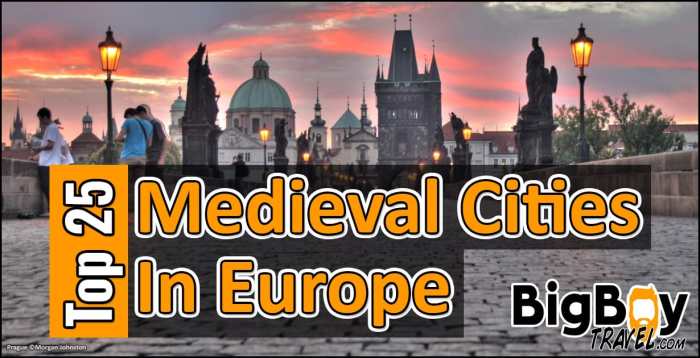
Medieval festivals and events offer a captivating glimpse into the past, allowing visitors to experience the rich history and traditions of Europe. These celebrations, often rooted in religious observances, agricultural cycles, or historical events, provide a unique opportunity to engage with medieval culture and heritage.
Top 5 Medieval Festivals and Events in Europe
These festivals offer a unique opportunity to experience medieval life, from traditional crafts and music to elaborate costumes and historical reenactments.
- Medieval Festival of Mittelalter-Spektakel in Germany:Held annually in Germany, the Mittelalter-Spektakel is a massive festival that attracts thousands of visitors. The event features a wide range of medieval activities, including jousting tournaments, live music performances, craft demonstrations, and a vibrant marketplace filled with artisans and merchants selling medieval wares.
Visitors can immerse themselves in the medieval world by dressing in period costumes, participating in interactive activities, and enjoying authentic medieval cuisine. The festival is known for its authentic atmosphere and its dedication to recreating the sights, sounds, and experiences of medieval life.
- The Medieval Festival of Guérande, France:The Medieval Festival of Guérande, France, is a lively celebration of the town’s rich history and heritage. The festival takes place in the historic walled city, transforming the streets into a medieval marketplace filled with artisans, musicians, and performers.
Visitors can witness traditional crafts demonstrations, watch jousting tournaments, and enjoy medieval music and dance performances. The festival also features a parade of historical characters, adding to the authentic medieval ambiance.
- The “Festival of the Middle Ages” in Italy:The “Festival of the Middle Ages” is held annually in various locations across Italy. The festival features a wide range of medieval activities, including historical reenactments, craft demonstrations, and live music performances. Visitors can explore medieval encampments, watch artisans at work, and enjoy authentic medieval cuisine.
The festival is a popular destination for history buffs and anyone interested in experiencing medieval life.
- The “Medieval Market” in England:Held annually in various locations across England, the “Medieval Market” is a popular event that brings together artisans, merchants, and performers to recreate the atmosphere of a medieval marketplace. Visitors can browse stalls selling medieval wares, watch craft demonstrations, and enjoy live music performances.
The market is a great opportunity to learn about medieval life and culture.
- The “Medieval Festival” in Scotland:The “Medieval Festival” in Scotland is a lively celebration of the country’s rich history and heritage. The festival features a wide range of medieval activities, including historical reenactments, craft demonstrations, and live music performances. Visitors can explore medieval encampments, watch artisans at work, and enjoy authentic medieval cuisine.
The festival is a popular destination for history buffs and anyone interested in experiencing medieval life.
Medieval Literature and Art
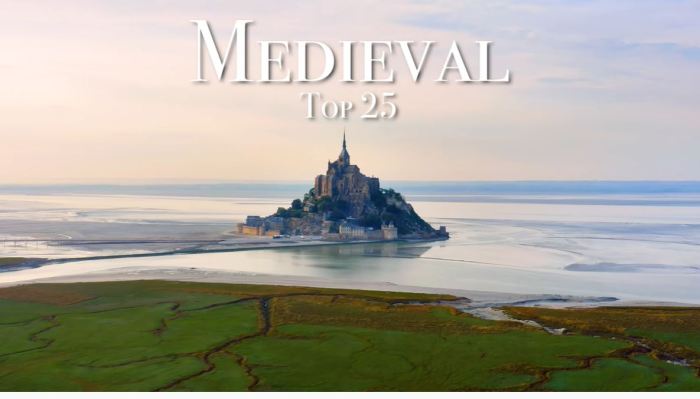
Medieval literature and art offer a window into the lives, beliefs, and values of people during the Middle Ages. They provide insights into the social, political, and religious landscape of the time, showcasing the impact of the Church, the rise of feudalism, and the evolving cultural and intellectual landscape.
The Influence of Medieval Literature and Art
Medieval literature and art played a significant role in shaping the cultural landscape of Europe. They provided a platform for storytelling, religious instruction, and the dissemination of knowledge. Through epic poems, religious texts, and intricate artwork, medieval creators expressed their worldview, explored moral dilemmas, and documented historical events.
Top 5 Literary Works and Artistic Masterpieces
Here are five prominent literary works and artistic masterpieces that reflect medieval life and culture:
Literary Works
- The Canterbury Talesby Geoffrey Chaucer: This collection of stories, written in Middle English, portrays a diverse cast of pilgrims traveling to Canterbury. It offers a glimpse into the social hierarchy, customs, and beliefs of 14th-century England. The tales are a mix of humor, satire, and morality, reflecting the complexities of human nature.
- The Song of Roland: This epic poem, written in Old French, recounts the story of Roland, a knight who died defending Charlemagne’s army against the Muslims. The poem glorifies chivalry, loyalty, and Christian faith, reflecting the values of the medieval period.
- Beowulf: An epic poem written in Old English, Beowulf tells the story of a warrior who defeats a series of monsters, including Grendel and his mother. The poem explores themes of courage, heroism, and the struggle between good and evil, reflecting the values and anxieties of the Anglo-Saxon period.
- The Divine Comedyby Dante Alighieri: This epic poem, written in Italian, takes the reader on a journey through Hell, Purgatory, and Paradise. Dante’s exploration of the afterlife reflects the religious beliefs and moral anxieties of the 14th century. The poem also provides a commentary on contemporary politics and society.
- The Book of Kells: This illuminated manuscript, created in Ireland in the 9th century, is a masterpiece of Celtic art. The intricate designs and vibrant colors reflect the artistic skills and cultural identity of the Irish people. The manuscript contains the four Gospels of the New Testament, highlighting the importance of religion in medieval Irish society.
Artistic Masterpieces
- The Bayeux Tapestry: This embroidered cloth, created in the 11th century, depicts the Norman conquest of England. It provides a visual record of the events leading up to the Battle of Hastings, offering insights into medieval warfare, weaponry, and social customs.
The tapestry also showcases the artistic skills of the time.
- The Ghent Altarpieceby Hubert and Jan van Eyck: This oil painting, created in the 15th century, is a masterpiece of Northern Renaissance art. The altarpiece depicts the Adoration of the Lamb, showcasing the meticulous detail, realism, and symbolism characteristic of the period.
The work reflects the religious fervor and artistic innovations of the time.
- The Last Judgmentby Michelangelo: This fresco, painted on the Sistine Chapel ceiling in the early 16th century, is one of the most iconic works of Renaissance art. It depicts the final judgment of humanity, showcasing Michelangelo’s mastery of anatomy, perspective, and composition.
The fresco reflects the religious beliefs and artistic sensibilities of the High Renaissance.
- The Mona Lisaby Leonardo da Vinci: This oil painting, created in the early 16th century, is one of the most famous works of art in the world. The enigmatic smile of the subject and the subtle sfumato technique employed by da Vinci have captivated viewers for centuries.
The painting reflects the Renaissance fascination with humanism, realism, and individual expression.
- The Gothic Cathedrals: These architectural masterpieces, built throughout Europe during the Middle Ages, are characterized by their soaring arches, stained-glass windows, and intricate sculptures. The cathedrals reflect the religious devotion, architectural ingenuity, and artistic skills of the time. Examples include Notre-Dame Cathedral in Paris, Cologne Cathedral in Germany, and Chartres Cathedral in France.
Traveling Through Time

Planning a trip to medieval Europe is an exciting adventure, but it requires some careful consideration. From transportation and accommodation to budgeting and navigating crowds, this section will provide practical tips to help you make the most of your journey.
Transportation
Choosing the right mode of transportation is crucial for exploring medieval Europe.
- Trains:European train networks are efficient and extensive, making them a convenient and scenic option for traveling between major cities. High-speed trains can connect you to destinations quickly, while slower regional trains offer a more immersive experience.
- Planes:Flying is a fast way to cover long distances, especially if you’re traveling to multiple countries.
Low-cost airlines offer budget-friendly options, but be aware of potential delays and baggage fees.
- Cars:Renting a car provides flexibility to explore off-the-beaten-path destinations, but driving in Europe can be challenging, especially in crowded cities. Consider using public transportation or organized tours for easier navigation.
Accommodation
Medieval Europe offers a wide range of accommodation options to suit different budgets and preferences.
- Hotels:From luxury hotels to budget-friendly chains, hotels provide a comfortable and convenient base for your explorations.
- Guest Houses:For a more intimate experience, consider staying in charming guest houses or bed and breakfasts, often run by locals who can provide valuable insights into the region.
- Hostels:Hostels offer budget-friendly accommodation, particularly for solo travelers or backpackers, and can be a great way to meet other travelers.
- Apartments:Renting an apartment provides more space and flexibility, especially for families or groups, and can be a more cost-effective option for longer stays.
Budgeting
Medieval Europe can be an expensive destination, but with careful planning, you can manage your budget effectively.
If you’re into castles and cobblestone streets, the “Top 25 Medieval Places To Visit In Europe” list is definitely for you. But if you’re craving mountain views and fresh air, you might want to check out the Top 30 Places In The Alps.
After all, there’s something about those snow-capped peaks that just screams “medieval adventure,” right? And then, once you’ve had your fill of alpine scenery, you can head back to the charming medieval towns and villages scattered throughout Europe.
- Accommodation:Booking accommodation in advance, especially during peak season, can help secure better rates. Consider staying outside of major cities for more affordable options.
- Transportation:Utilize public transportation whenever possible, especially in cities. Look for discounts on train tickets, such as youth passes or group fares.
- Food:Enjoy local cuisine at affordable restaurants and markets. Pack your own snacks and drinks to avoid expensive purchases at tourist sites.
- Attractions:Many museums and attractions offer discounts for students, seniors, or families. Consider purchasing a city pass or museum pass for access to multiple attractions at a discounted price.
Best Time to Visit
The best time to visit medieval Europe depends on your preferences and the specific locations you plan to explore.
- Spring and Fall:These seasons offer pleasant weather, fewer crowds, and beautiful foliage, making them ideal for sightseeing and outdoor activities.
- Summer:Summer months are popular for tourism, so expect higher prices and larger crowds. However, the longer daylight hours provide more time for exploring.
- Winter:While winter can be cold, it offers a unique charm with snow-covered landscapes and festive Christmas markets. Expect shorter daylight hours and limited outdoor activities.
Final Summary
So, pack your bags, grab your camera, and prepare to be transported to a time of knights, chivalry, and grand cathedrals. Whether you’re drawn to the grandeur of castles, the serenity of monasteries, or the bustling streets of medieval cities, Europe offers an unforgettable journey through the heart of history.
Embrace the magic of the past, discover hidden gems, and create memories that will last a lifetime.
FAQ Guide
What is the best time to visit medieval sites in Europe?
The best time to visit depends on the specific location and your preferences. Spring and fall offer pleasant weather and fewer crowds, while summer brings peak season and potential heat. Consider researching the local climate and peak tourist seasons for your chosen destinations.
How much does it cost to travel to medieval sites in Europe?
Travel costs vary greatly depending on your budget, travel style, and chosen destinations. Budget-friendly options include hostels, budget airlines, and self-catering accommodations. For a more luxurious experience, consider upscale hotels, private tours, and fine dining.
Are there any special tips for visiting medieval sites?
Wear comfortable shoes, pack layers for changing weather, and bring a reusable water bottle. Consider purchasing a tourist pass or multi-attraction ticket for potential savings. Research opening hours and admission fees in advance, especially during peak seasons.



